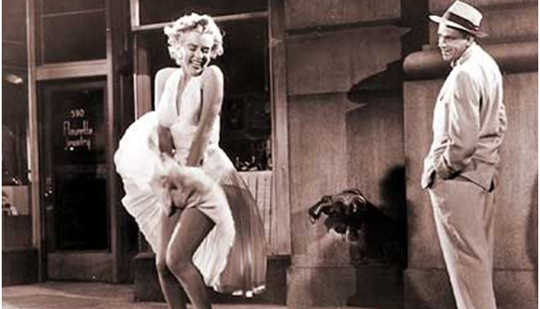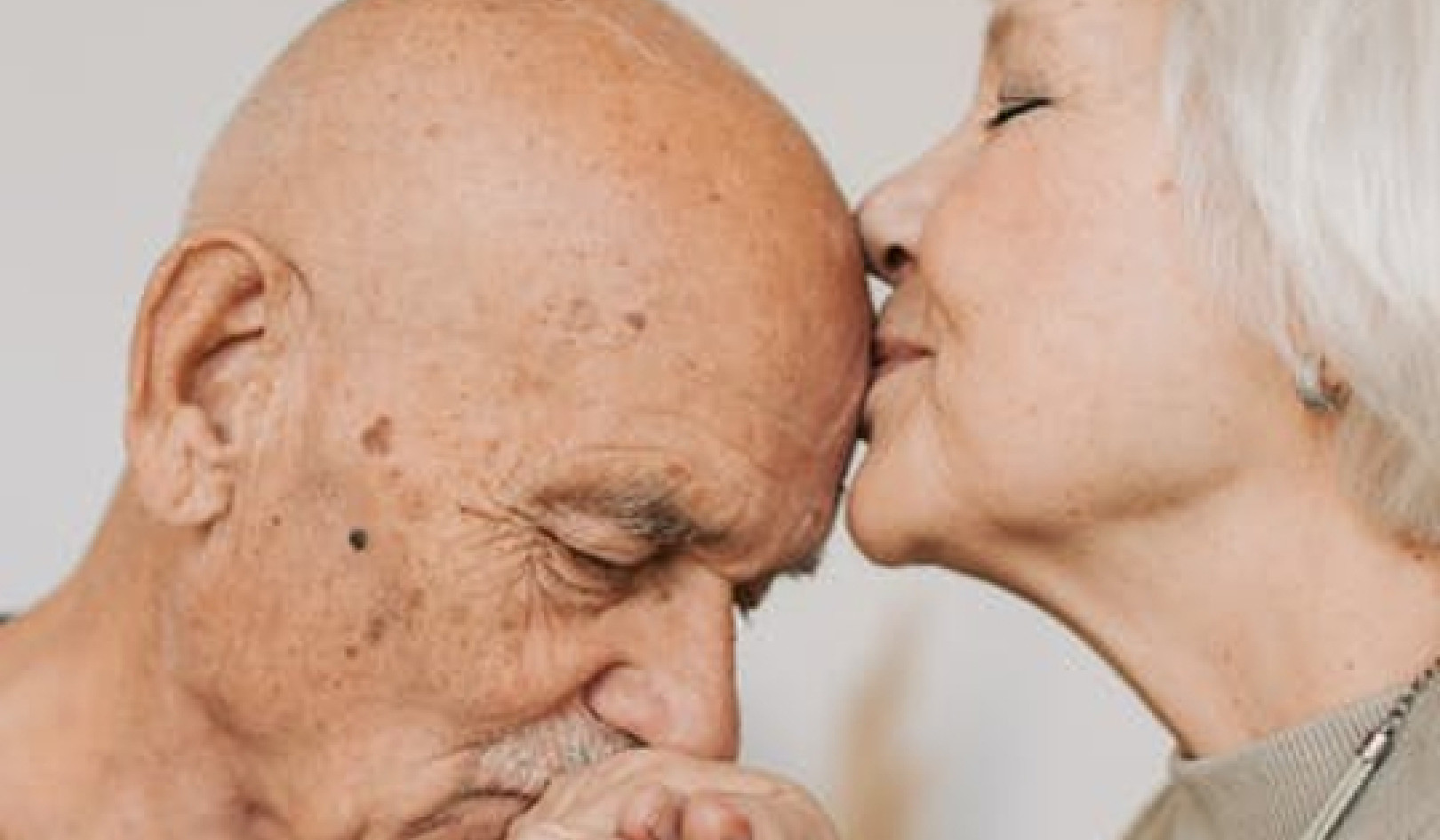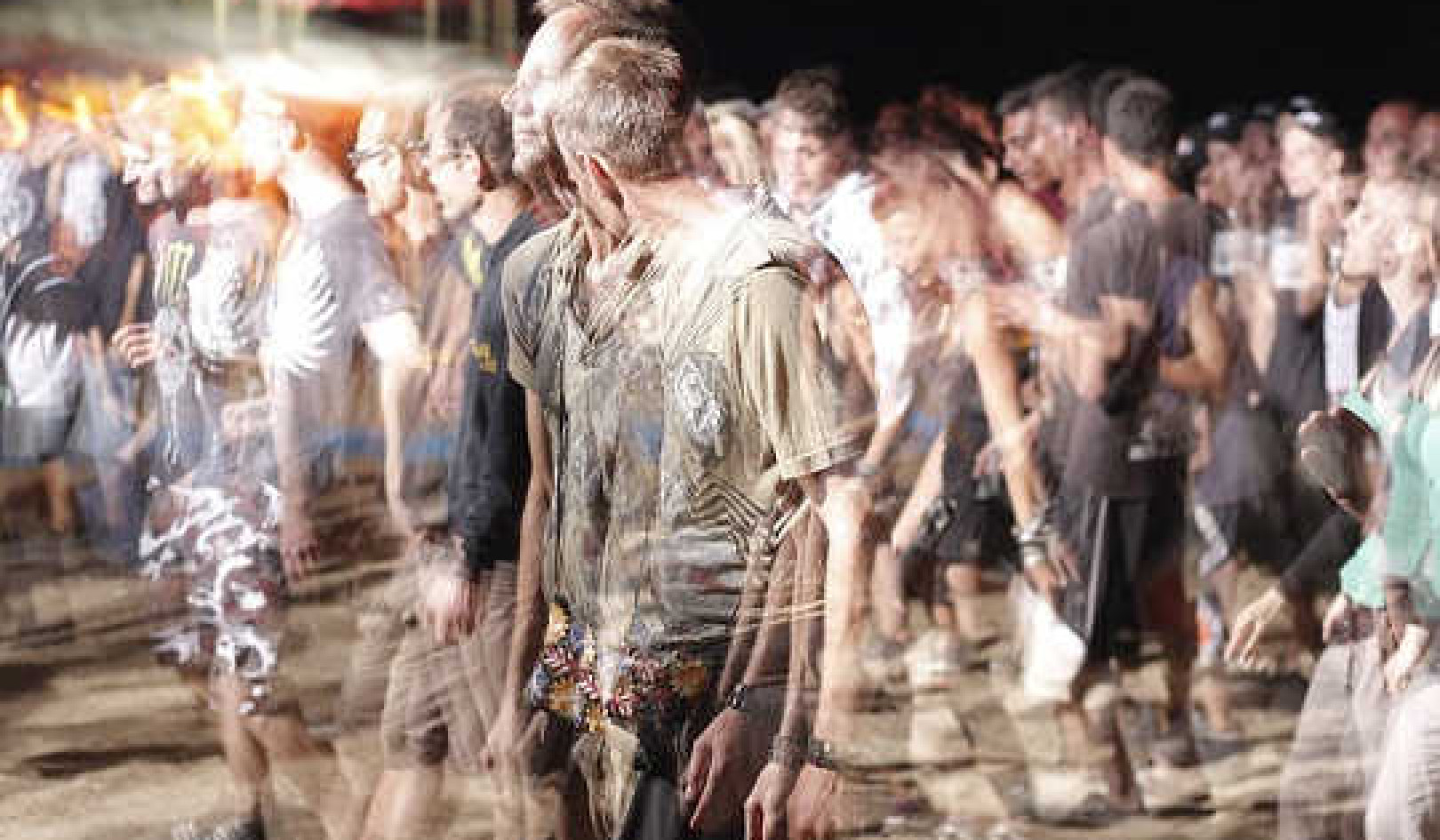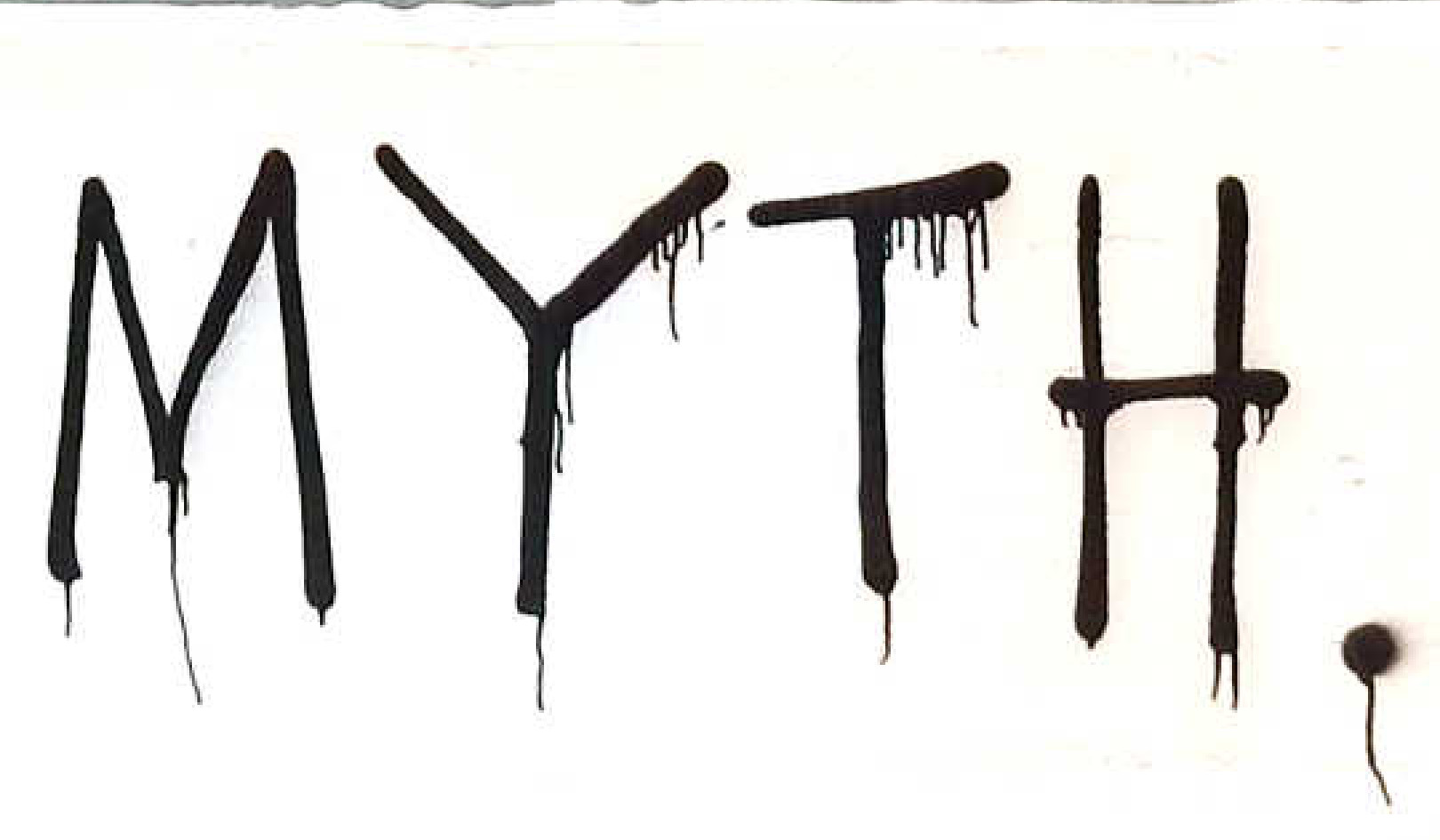
The “gaze” is a term that describes how viewers engage with visual media. Originating in film theory and criticism in the 1970s, the gaze refers to how we look at visual representations. These include advertisements, television programs and cinema.
When film critics talk about the gaze, they are often referring to the “male gaze”. But what does that really mean? And is there a female equivalent?
Where Did The Idea Of A Male Gaze Come From?
The “male gaze” invokes the sexual politics of the gaze and suggests a sexualised way of looking that empowers men and objectifies women. In the male gaze, woman is visually positioned as an “object” of heterosexual male desire. Her feelings, thoughts and her own sexual drives are less important than her being “framed” by male desire.
A key idea of feminist film theory, the concept of the male gaze was introduced by scholar and filmmaker Laura Mulvey in her now famous 1975 essay, Visual Pleasure and Narrative Cinema.
Adopting the language of psychoanalysis, Mulvey argued that traditional Hollywood films respond to a deep-seated drive known as “scopophilia”: the sexual pleasure involved in looking. Mulvey argued that most popular movies are filmed in ways that satisfy masculine scopophilia.
Although sometimes described as the “male gaze”, Mulvey’s concept is more accurately described as a heterosexual, masculine gaze.
Visual media that respond to masculine voyeurism tends to sexualise women for a male viewer. As Mulvey wrote, women are characterised by their “to-be-looked-at-ness” in cinema. Woman is “spectacle”, and man is “the bearer of the look”.
The Postman Always Rings Twice (1946) offers a famous example of the male gaze. In the scene below, the audience is introduced to Cora Smith, the film’s lead female character. Using close-ups, the camera forces the viewer to stare at Cora’s body. It creates a mode of looking that is sexual, voyeuristic, and associated with the male protagonist’s point-of-view.
The Postman Always Rings Twice (1946).
{youtube}WGFer3-Aguw{/youtube}
It also establishes some important plot points: that the hero desires Cora, and that Cora recognises his lust. But the strongest message is that Cora is sexy. Indeed, the viewer learns that Cora is sexy before they even learn her name. Even if a viewer isn’t attracted to women in “real life”, the scene still makes sense. A lifetime of seeing women sexualised in television, music videos and advertisements has made us very comfortable with assuming the male gaze.
Finding The Male Gaze
The male gaze takes many forms, but can be identified by situations where female characters are controlled by, and mostly exist in terms of what they represent to, the hero. As Budd Boetticher, who directed classic Westerns during the 1950s, put it:
What counts is what the heroine provokes, or rather what she represents. She is the one, or rather the love or fear she inspires in the hero, or else the concern he feels for her, who makes him act the way he does. In herself the woman has not the slightest importance.
This can be see in the different ways the camera repeatedly positions us to look at women’s bodies. Think of Rear Window (1954), for a literal framing of women’s bodies, or She’s All That (1999), which revolves around a make-over. For a modern example, the Transformers film series (2006-2014) presents women as sexual objects to be desired.
Filmmakers often attempt to avoid presenting female characters as “mere” sexual objects by giving them complex back stories, strong motivations and an active role in the plot of their story. Yet the masculine gaze is still commonplace. Catwoman in The Dark Knight Rises (2012) has significant personal motivations, yet she is still clearly there to be looked at.
Catwoman in The Dark Knight Rises (2012).
{youtube}aAzXwlmQ0b4{/youtube}
Different Ways Of Looking
Although written 40 years ago, Mulvey’s essay still provokes strong reactions. One common response is that both women and men are objectified in cinema.
 Gilda (1946). CBC
Gilda (1946). CBC
After all, isn’t Johnny Farrell (Glenn Ford) as sexy as Gilda Mundson (Rita Hayworth) in Gilda (1946)?
Isn’t Fitzwilliam Darcy as beautiful as Elizabeth Bennet in the BBC teleseries of Pride and Prejudice (1995)? Surely this indicates the presence of a (heterosexual) female gaze.
Such arguments don’t consider how insistently women are presented as sexual objects.
The Hawkeye Initiative is a project that draws attention to the different ways male and female superheroes are posed in comics and movies. Take this illustration as an example, which poses the male heroes of The Avengers in the same hyper-sexualised position as the film’s sole female protagonist, Black Widow.
 How the Avengers might look if the male gaze was also applied to them, according to The Hawkeye Initiative.The illustration makes a good point about double standards. But its humour derives from the fact that it is unusual to see men sexualised in the same way as women.
How the Avengers might look if the male gaze was also applied to them, according to The Hawkeye Initiative.The illustration makes a good point about double standards. But its humour derives from the fact that it is unusual to see men sexualised in the same way as women.
Another argument is that cinema doesn’t invite women to desire men’s bodies. Rather, female viewers are positioned to identify with a heroine who is herself desired by a man. According to this logic, it is not Fitzwilliam Darcy’s wet undershirt that inflames the female viewer in Pride and Prejudice. Rather, it is Darcy’s longing for Elizabeth that truly appeals.
Is There A Female Gaze?
Many films that represent women’s desire do so in “non gaze”-related ways. Jane Campion’s The Piano (1993) expresses the heroine’s passionate nature through the film’s famous score.
Sofia Coppola’s The Virgin Suicides (1999) conveys female experience through sound and visual aesthetics, portraying the teenage protagonists’ inner life. This scene uses warm tones (yellow, salmon), feminine symbols (flowers, unicorns) and music to express female adolescence.
The Virgin Suicides (1999).
{youtube}Qq2TXAE-Ih8{/youtube}
Coppola uses a similar strategy in Marie Antoinette (2006), using florid set design to communicate women’s claustrophobic life at Versailles.
The argument that women’s desire is best expressed through sensation rather than a gaze may evoke the cliché that male desire is “visual” whereas women’s is “sensory”. But men’s inner lives have always been conveyed via sound and sensation. Action films like Rambo (2008) or Casino Royale (2006), for example, bombard the senses with male anguish and aggression.
So is there a female gaze? Certainly, beautiful men abound in cinema. But I’d argue that there is no direct female equivalent of the male gaze. The male gaze creates a power imbalance. It supports a patriarchal status quo, perpetuating women’s real-life sexual objectification.
For this reason, the female gaze cannot be “like” the male gaze.
Instead, films that centre women’s experiences are deeply subversive. Think of Fish Tank (2009), a coming-of-age story about a disadvantaged girl’s vulnerability, or In the Cut (2003), a story about a woman’s sexual discovery.
Films about women’s sexuality often face censorship ways that prove their subversiveness. For instance, the makers of The Cooler (2003), Boys Don’t Cry (1999) and Blue Valentine (2010) claim that their films were rated R or NC-17 for depicting cunnilingus. Such scenes focus on female pleasure and undermine women’s “to-be-looked-at-ness”. Censorship bodies like the Motion Picture Association of America, however, seem to treat cunnilingus as “more graphic” than other forms of sex.
Films like The Piano, In The Cut or Marie Antoinette show that cinema can use music, erotic scenes and visual aesthetics to express a feminine point of view. In doing so, such films counter the gaze, depicting women as subjects rather than objects “to be looked at”. Whilst not replicating the male gaze exactly, they challenge the enduring dominance of masculine worldviews in film and media.
About The Author
Janice Loreck, Teaching Associate in the School of Media, Film and Journalism, Monash University.
This article was originally published on The Conversation. Read the original article.
Related Book:
at

Thanks for visiting InnerSelf.com, where there are 20,000+ life-altering articles promoting "New Attitudes and New Possibilities." All articles are translated into 30+ languages. Subscribe to InnerSelf Magazine, published weekly, and Marie T Russell's Daily Inspiration. InnerSelf Magazine has been published since 1985.

Thanks for visiting InnerSelf.com, where there are 20,000+ life-altering articles promoting "New Attitudes and New Possibilities." All articles are translated into 30+ languages. Subscribe to InnerSelf Magazine, published weekly, and Marie T Russell's Daily Inspiration. InnerSelf Magazine has been published since 1985.
























